Breaking News
- 3 years ago
- WHERE THE WILDWAYS ARE
- 3 years ago
- They Call It Worm. They Call It Lame. That’s Not Its Name.
- 3 years ago
- Climate of Change Episode 4: ‘Rewiring the Future’ Review
- 3 years ago
- The Playbook for Progress Homepage
- 3 years ago
- Climate of Change Episode 3: “Faith, Hope, and Electricity” – A Review
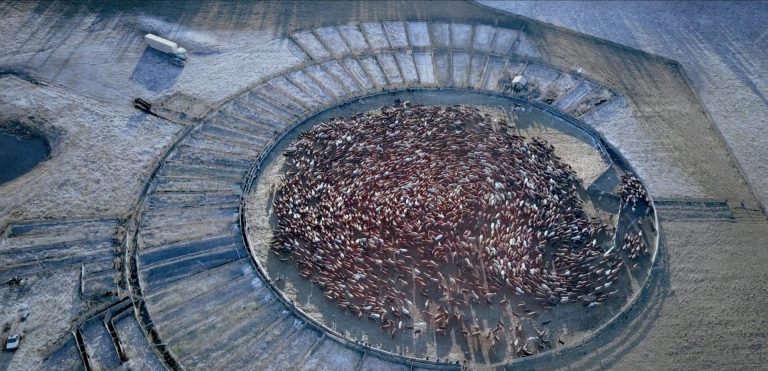
Coming Full Circle
Nettie Wild’s new film shows us that the future of sustainable agriculture is round.
Written by: Ishani Dasgupta
Circular, hypnotizing, and musical, even when completely filled with the sounds of emphatic cows. These were my first thoughts when watching the short film Roundup directed by Nettie Wild. This artistic piece observed 4000 cattle arriving at a communal pasture/corral where they were promptly sorted (through a circular system) and returned to 20 rancher families. The entire film revolved solely on the mesmerizing pattern of the corral, with limited shots of livestock in the process of rounding up.
As a viewer, I could understand that this was an impactful artistic piece; believe me when I say I was absentmindedly drawing that same circular pattern on the margins and corners of papers for weeks after watching the video. I also gained a new appreciation for family farming and ranching—specifically, I was awed by the relationship between the farming families, their animals, and the land. The film did an excellent job capturing this partnership between people and nature but interestingly did not do so through narration (as seen in documentaries) and rather, let the art speak for itself.
I interviewed the director of this film, Nettie Wild, to investigate both the meaning behind this piece and its ability to promote environmental progress in the agricultural sector in Canada. Although, the first thing we had to figure out was why Wild was attracted to this particular ranch and agricultural landscape as a whole. Of course, her response was similar to what first hit me when watching this piece: the unique architectural design of this corral.
“I saw this incredible photograph of this roundup…I was just knocked out from the image of it. As a filmmaker, you don’t see images like THAT very often—you know, the complicated, beautiful, and surprising. All of that, you make a movie about it,” Wild stated.
Wild detailed how she had met a ranch family that introduced her to the Sunset community pasture in British Columbia and she got to see firsthand the event known as “Roundup”. Every fall, cattle owning families would bring their cattle back from grazing in the community pasture and then, through the corral, would divide the large herd into smaller groups for producers or for shipment. Subsequently, in the spring season, the families would return with their new herds to release the cattle back into the large pasture, until the next sorting period.
The roundup operation, as Wild learned, was unique compared to others around the world. The director described this corral as “one of a kind”, in that circular corrals are both hard to find and much more efficient than typical, conventionally used rectangular corralling systems. It shortens a process that would likely take days to only a few hours and not only because of its reduced size, but also because of its design suited to the movement and behaviour of cows.
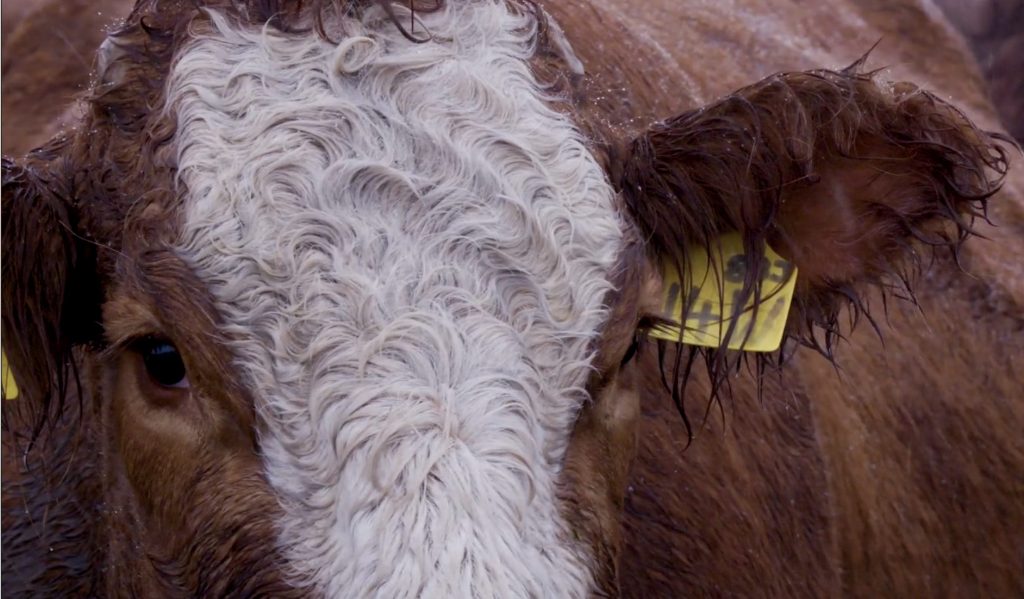
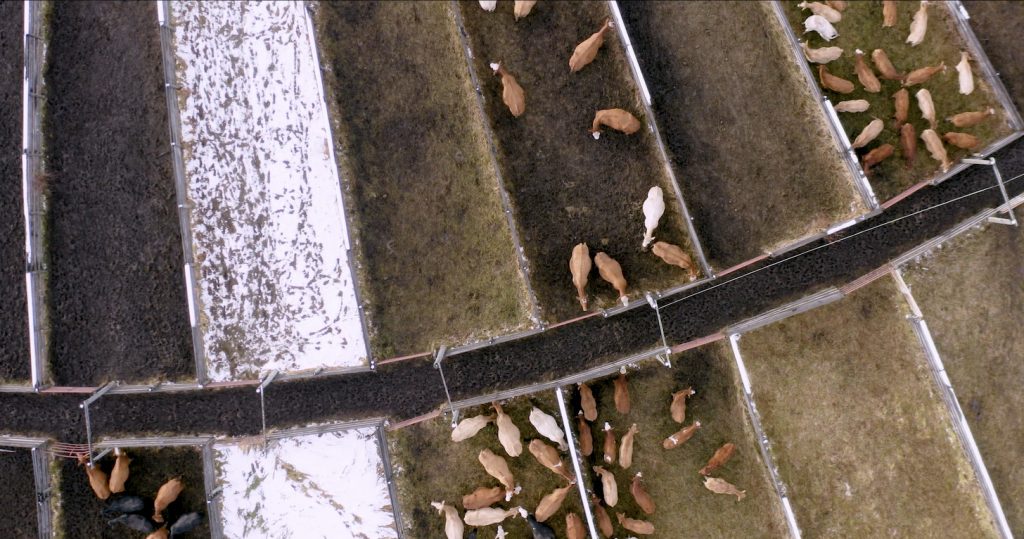
“I learned from legendary animal behaviourist Temple Grandin that cows don’t like going in a straight line. They don’t know where they are going, but if it is a curved line they think they are coming back where they come from and they calm right down. It’s part of working with animals in a humane way,” Wild commented.
The fact that this operation was built with the care of its animals in mind was surprising to find out. Agriculture in North America has often been criticized for its callous treatment of livestock. Moreover, farming has often received high criticism for its unsustainable practices. Annually, thousands of reports, news stories, and media are published, suggesting that food production is the one of the largest destructors of the biosphere. As one source describes, modern (conventional) agriculture has directly or indirectly contributed to: massive amounts of emissions in the atmosphere, global soil degradation, deforestation, and excessive biodiversity loss.
However, this film did not make a commentary of that sort about agricultural practices. In fact, it did little more than document (in an artistic way) a new and relatively sustainable practice in the cattle industry. It became evident from my interview with Wild that a blanket statement on the “villain”, which was agriculture, was not appropriate or fair. The biggest challenges to the environment and animal rights from the food production industry are not the families in the Sunset community pasture, but rather, as Wild mentioned, “the three large industrial farming groups meat processing plants which control 85% of the beef production in Canada.”
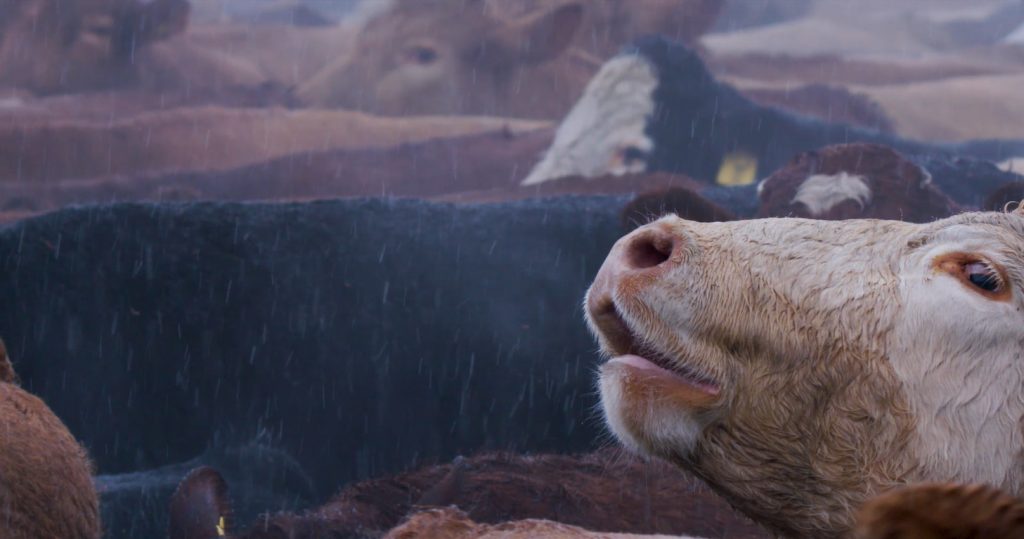
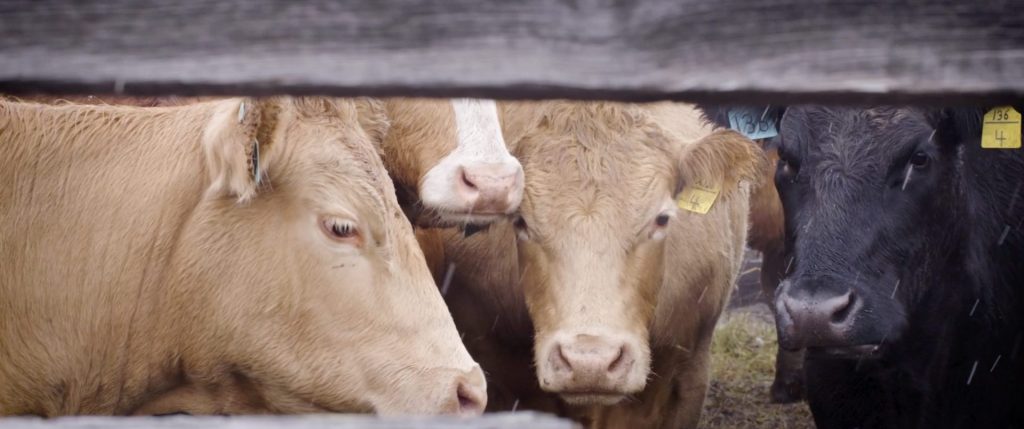
By comparison, smaller and family-owned ranching operations have had a history of being progressive when it comes to pushing a sustainable agenda. Although, these operations are often grouped together with large-scale agriculture, which solely advances the environmental costs seen in food production. I was able to interview one of the members of the Sunset community pasture and a proud family rancher herself, Kristina Schweitzer.
Schweitzer has been ranching for about 25 years with her husband, Troy. She is an active board member, amongst 20 other families of the community pasture, and takes part in using the roundup operation annually. Schweitzer’s family owns an individual ranch, which produces forage (grass, dry hay, etc.) for her cattle operation and sells/markets her own livestock (cow-calf operation). She was adamant in expressing how she, and other small families that use the round-up system, are sustainable and open-minded operators of livestock.
“Sustainability in farming can be different to each operation or family. We are young enough, able to adapt, and able to change,” Schweitzer commented.
Schweitzer was able to provide in critical detail how her ranching operation had itself changed over time to adapt and acknowledge the growing concern for agricultural sustainability in Canada. Her individual ranch has adopted a solar-powered watering system. They also plant grass that helps prevent soil erosion and aids in cleaning water and air systems, and regularly adapt and change their operation based on best evolving practices for climate-change mitigation. On the roundup operation, Schweitzer detailed that grazing cattle on fields (like that seen on Sunset pasture) often helps sequester carbon and foster the health of those grasslands. Schweitzer shared:
“As farmers, we really do care about the environment. I feel as though our biggest partnership in farming is mother nature. I am thankful for all the things the environment gives to us, like rainfall, sunshine, and warmth for our beautiful soil. It is our passion.”
And the last part was most important. Nettie Wild documented the mesmerizing design of this corral, but more significantly, the passion of these farmers. As viewers, we could not have possibly understood the sustainable practices of the roundup operation, but neither did we cast our usual judgment on the ‘cruelty of farming’. We simply watched and were awed about the corral and synchronicity of people, animals, and their land. As Wild detailed about her art piece,
“If this film had a purpose, it would be to surprise people. It’s engaging, it doesn’t turn people away, it pulls people together. Maybe there is a conversation to be had there…on common ground.”
In the end, that is all that mattered. The establishing of a common ground, where two distinctly opposite groups, such as farmers and conservationists, could have a discussion on a sustainable future, where solutions could be pondered and no judgment would inhibit or stall environmental progress. People would not assign blame, but rather be appreciative of current eco-friendly initiatives, like the roundup operations and its care towards all species. That is what art can do and that is what Nettie Wild’s Roundup did.
Create a common (circular) ground for warring individuals to stop fighting each other and start saving their planet instead.
Ishani Dasgupta is majoring in Environment, Resources, and Sustainability (ERS), while also pursuing a minor in English & Literature Studies, at the University of Waterloo. She is a dedicated environmental writer and has worked throughout the course of her career to write about the challenges faced by communities, natural spaces, and activists alike regarding the destruction of the natural environment–she is interested in exploring global inequities created by the current Anthropocene. In her free time, Ishani likes to make music, read, and go on nature walks. Ishani previously took on the role of an editorial coordinator for Alternatives Journal (A/J).

